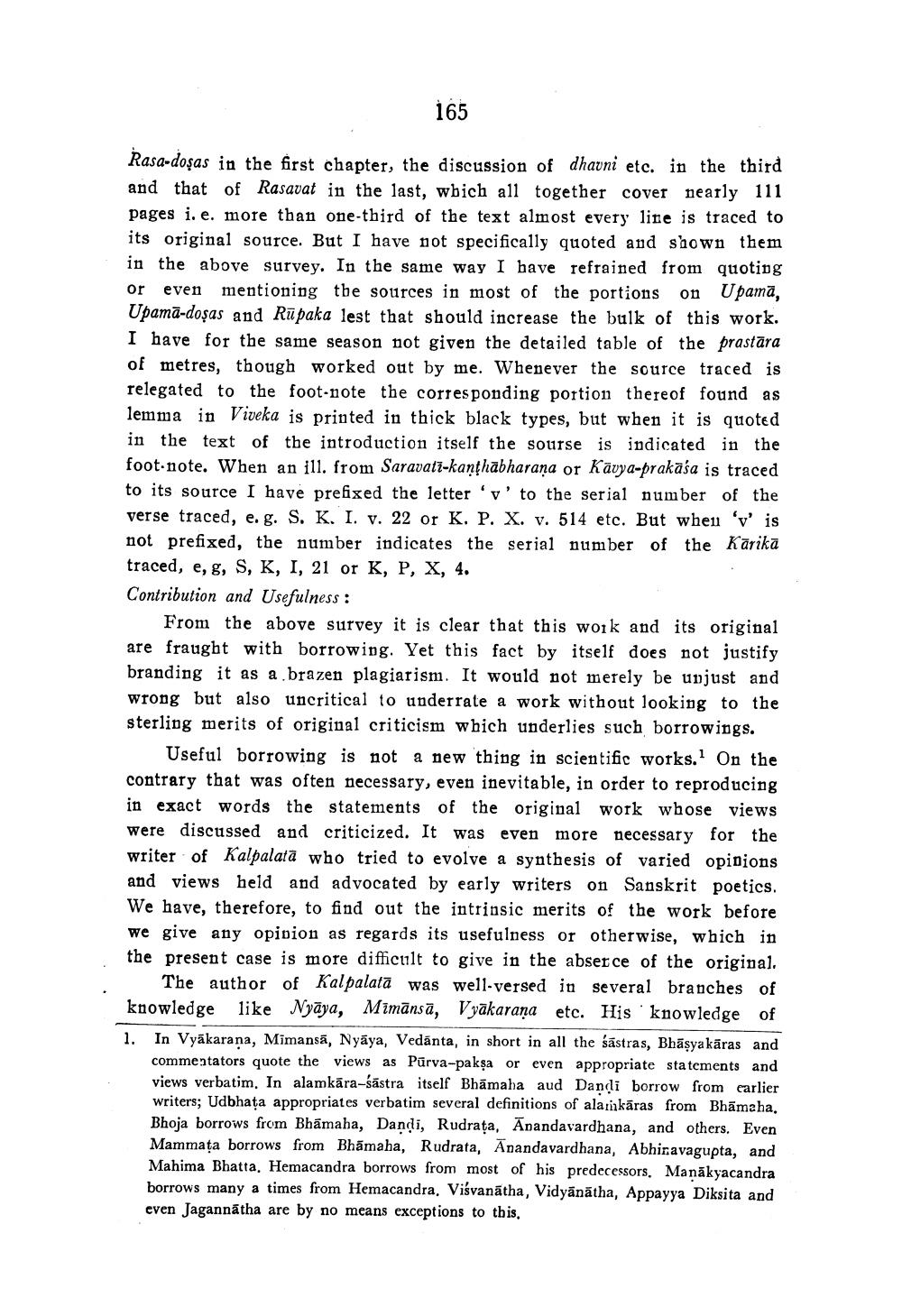________________ 165 Rasa-dosas in the first chapter, the discussion of dhavni etc. in the third and that of Rasavat in the last, wbich all together cover nearly 111 pages i. e. more than one-third of the text almost every life is traced to its original source. But I have not specifically quoted and shown them in the above survey. In the same way I have refrained from quoting or even mentioning the sources in most of the portions on Upama, Upama-dosas and Rupaka lest that should increase the bulk of this work. I have for the same season not given the detailed table of the prastara of metres, though worked out by me. Whenever the source traced is relegated to the foot-note the corresponding portion thereof found as lemma in Viveka is printed in thick black types, but when it is quoted in the text of the introduction itself the sourse is indicated in the foot-note. When an ill. from Saravati-kanthabharana or Kavya-prakasa is traced to its source I have prefixed the letter 'v' to the serial number of the verse traced, e.g. S. K. I. v. 22 or K. P. X. v. 514 etc. But wheu vis not prefixed, the number indicates the serial number of the Karika traced, e, g, S, K, I, 21 or K, P, X, 4. Contribution and Usefulness : From the above survey it is clear that this work and its original are fraught with borrowing. Yet this fact by itself does not justify branding it as a brazen plagiarism. It would not merely be unjust and wrong but also uncritical to underrate a work without looking to the sterling merits of original criticism which underlies such borrowings. Useful borrowing is not a new thing in scientific works. On the contrary that was often necessary, even inevitable, in order to reproducing in exact words the statements of the original work whose views were discussed and criticized. It was even more necessary for the writer of Kalpalata who tried to evolve a synthesis of varied opinions and views held and advocated by early writers on Sanskrit poetics. We have, therefore, to find out the intrinsic merits of the work before we give any opinion as regards its usefulness or otherwise, which in the present case is more difficult to give in the abser ce of the original. The author of Kalpalata was well-versed in several branches of knowledge like Nyaya, Mimansa, Vyakarana etc. His ' knowledge of 1. In Vyakarana, Mimansa, Nyaya, Vedanta, in short in all the sastras, Bhasya karas and commentators quote the views as Purva-paksa or even appropriate statements and views verbatim. In alamkara-sastra itself Bhamaha aud Dandi borrow from earlier writers; Udbhata appropriates verbatim several definitions of alarakaras from Bhamaha. Bhoja borrows from Bhamaha, Dandi, Rudrata, Anandavardhana, and others. Even Mammata borrows from Bhamaha, Rudrata, Anandavardhana, Abhinavagupta, and Mahima Bhatta. Hemacandra borrows from most of his predecessors. Manakyacandra borrows many a times from Hemacandra. Visvanatha, Vidyanatha, Appayya Diksita and even Jagannatha are by no means exceptions to this,




